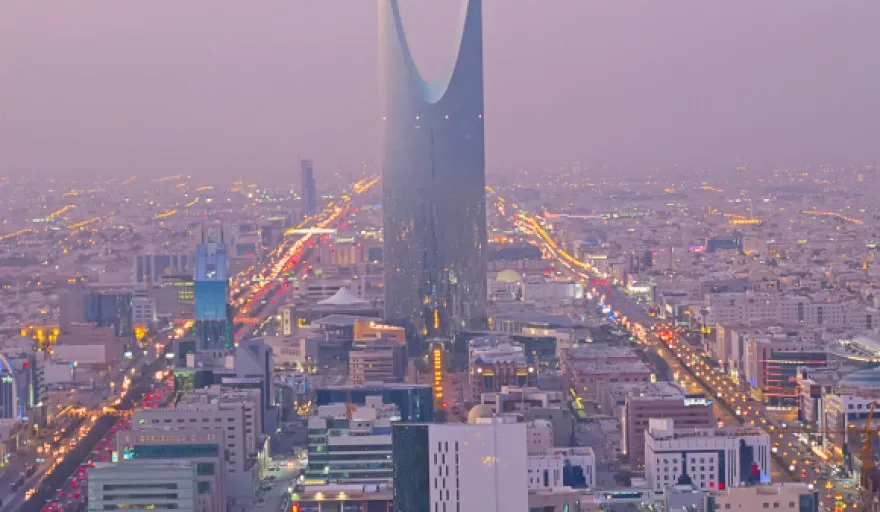As widely reported, the Kingdom of Saudi Arabia recently issued its Vision 2030 plan along with the National Transformation Programme 2020. Together these plans set far-reaching goals to transform the Kingdom’s oil-dependent economy to one which is diverse, sustainable and at the crossroads of international trade. A significant target under Vision 2030 is the addition of 9.5 gigawatts (GW) of new renewable energy capacity, including 3,450 megawatts (MW) by 2020. A comprehensive renewable energy procurement programme similar to South Africa’s Renewable Energy Independent Power Producer Procurement Programme (REIPPPP) could act as a vehicle for the Kingdom to achieve Vision 2030’s renewable energy targets and its broader economic development and diversification goals.
Perhaps coincidentally, Saudi’s renewable goals nearly mirror those of South Africa when it issued the first request for proposal (RFP) under REIPPPP. In August 2011, the initial RFP sought 3,725 MW of renewable energy projects to be procured from the private sector over five rounds. At the time, South Africa had no history of large-scale renewable energy installations and a limited renewables industry. Nevertheless, it procured nearly 4,000 MW in the first three bidding rounds alone. To date REIPPPP has generated 92 new renewable IPPs across four bidding rounds; US$12.7 billion in investment committed for the construction of more than 6,200 MW of capacity in onshore wind, solar PV and concentrated solar technologies. REIPPPP was able to deliver megawatts to the grid quickly and the resulting competitive environment bore cost effective tariffs for South Africa.
A feature which set REIPPPP apart from other international examples of competitive bidding was the inclusion of economic development requirements. The programme mandated that committed projects meet minimum thresholds for black South African ownership and management, job creation, inclusion of local content, capacity development, and other commitments for socioeconomic development. Altogether the stringent economic development requirements jumpstarted the renewables sector, lured foreign investment and bolstered the capacity and experience of South African institutions.
FURTHER ANALYSIS
To the extent the Kingdom considers a comprehensive approach, design and implementation of a successful programme could start with an analysis of South Africa’s REIPPPP in order to adapt and enhance it for the Kingdom. For instance, the means to achieve REIPPPPs economic development targets could be used in the Kingdom, but the targets themselves would not apply. Vision 2030 has targeted the creation of a vibrant renewable energy sector and local content targets, but otherwise the Kingdom would need to establish its own set of economic development objectives and measurable criteria.
For example, the Kingdom’s programme would have to take into account its current renewable sector capabilities. Requirements for local content for renewables equipment and materials may have the effect of increasing tariffs given the nascent status of Saudi’s renewable sector. Comparatively, gradual increases in local content across successive bid phases could encourage growth in local renewable sector capabilities without encumbering early stage bid competitiveness.
Saudi Vision 2030 also aims to increase the contribution of small and medium enterprises to the Kingdom’s economy. South Africa had similar goals and used REIPPPP to achieve them by limiting foreign ownership in project companies and by requiring minimum shareholdings by South African enterprises. The Development Bank of Southern Africa (DBSA) and the Industrial Development Corporation (IDC) assisted by providing loans and other forms of financing to South African enterprises to bolster their participation. If Saudi were to institute similar requirements, it would need to determine whether or not small and medium Saudi enterprises would need financial or other forms of support to participate in the renewables programme. If so, the Kingdom would then have to explore which entity would serve a function similar to that of DBSA and IDC.
FUNDING
Under REIPPPP the rand-denominated power purchase agreements (PPAs) made it uncompetitive for foreign commercial lenders to provide long-term funding. Thus a majority of the project debt under the programme was provided by local South African commercial banks. Given the Kingdom’s currency peg and the fact that PPA tariffs are typically indexed to the US dollar, one would expect foreign financiers to have a greater role under a renewables programme in the Kingdom. Since local and foreign banks have each played a significant role in the Kingdom’s successful conventional IPPs both are familiar and comfortable with financing the energy sector and would likely contribute to the success of the Kingdom’s renewable programme.
Above all, the South African experience highlights that a well-designed, transparent and robust procurement process encourages private developer and lender participation. In the end a comprehensive renewables programme would enhance Saudi’s institutional capacity, experience and knowledge in the renewable energy sector as well as spur a local renewables industry; all in addition to the primary goal of increasing renewable generation capacity. It is undoubtedly an exciting time for Kingdom and renewable energy industry participants, one which we will continue to monitor with interest.
Writers: Partner, Stephen Jurgenson; Of Counsel, Jason Parker; and Associate, Fadil M. Bayyari from the Dubai office of international law firm, Winston & Strawn.


















